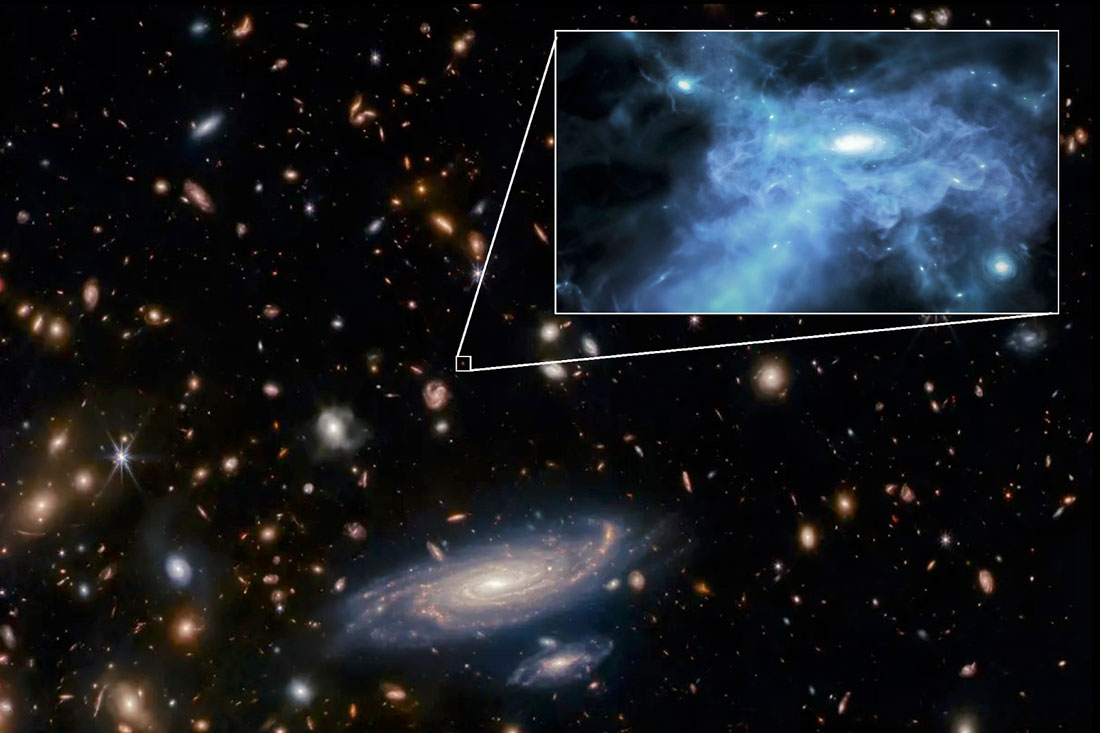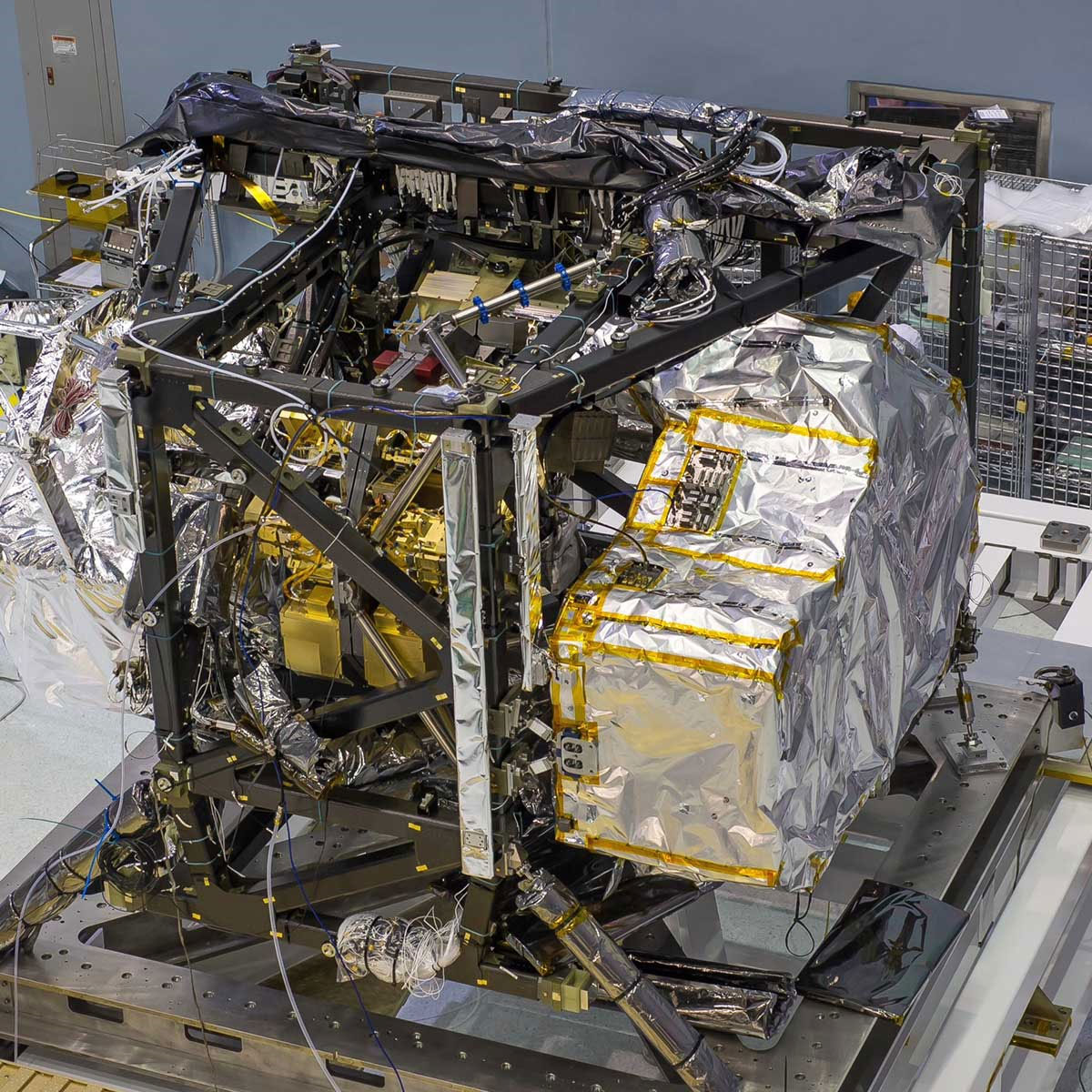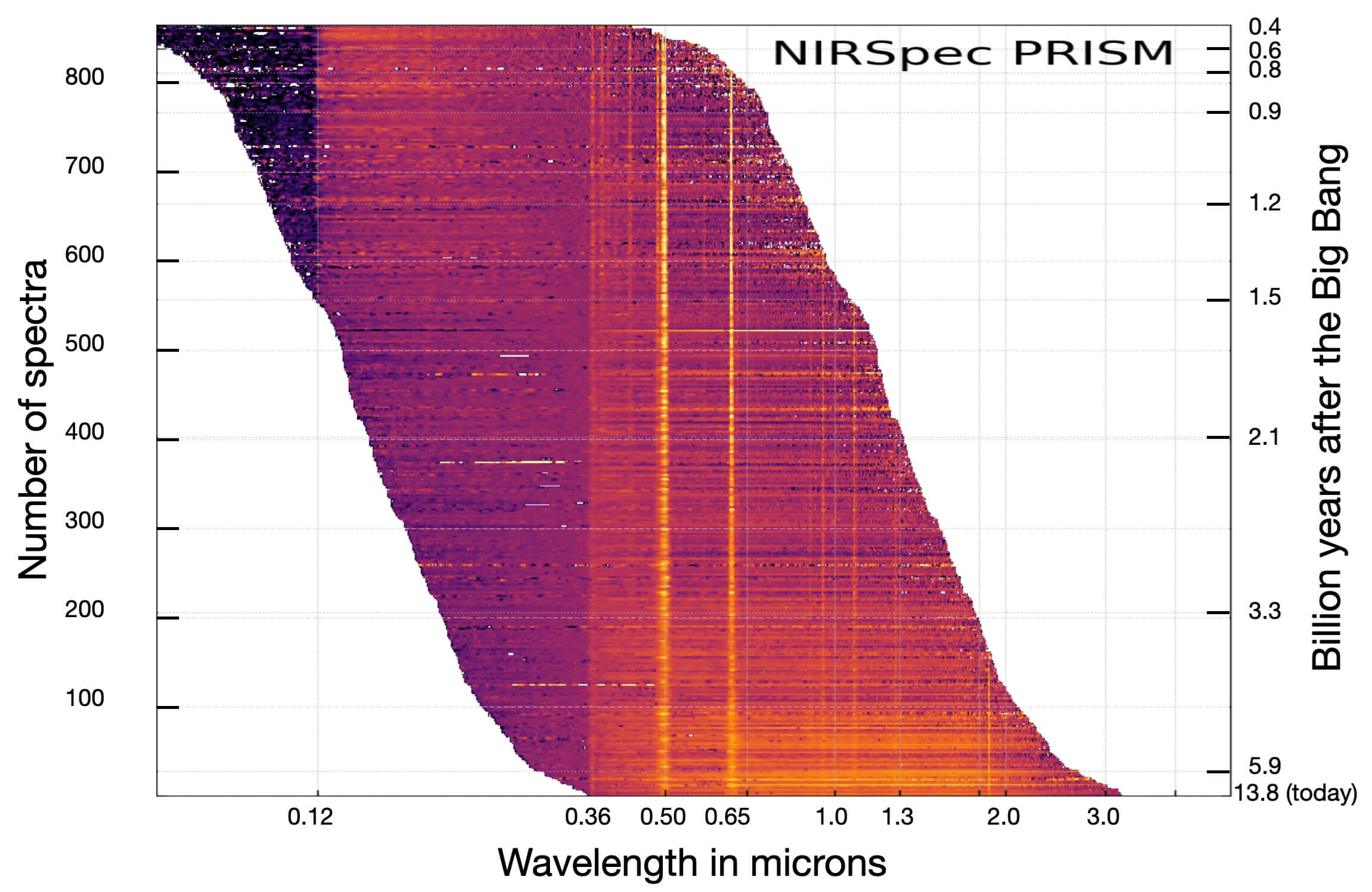Webb provides a new detailed look into the formation of the first galaxies
In the past few years, the James Webb Space Telescope has revolutionized our understanding of how the first stars and galaxies formed in the early Universe. Now, an international team of researchers, led by astronomers at the Cosmic Dawn Center in Copenhagen, have published the first, large-scale study of more than 600 galaxies observed within the first billion years after the Big Bang. This survey moves the field from studying the first few discoveries with Webb, to establishing large, statistical samples of galaxies. Intriguingly, this study reveals how some of the earliest galaxies accrete massive amounts of pristine gas from their surroundings, a sign that we are now seeing the formation of galaxies in progress.

While "100–200 million years after the Big Bang" might seem like a long time to us humans, in a cosmic context it corresponds to the Universe taking its first baby steps. It is nevertheless within this epoch that the first stars and galaxies are thought to have emerged.
However, before the launch of the James Webb Space Telescope (JWST) only a few, exceptionally bright galaxies were known even within the first billion years.
From a handful to hundreds

Now, with its remarkable sensitivity, JWST has detected hundreds of galaxies in this epoch, reaching some of the most distant galaxies at cosmic dawn.
Utilizing JWST's NIRSpec instrument — a spectrograph which splits the light into its components over the full 1-5 micron wavelength range — researchers from the Cosmic Dawn Center at the Niels Bohr Institute and DTU Space present the first major, spectroscopic study of more than 600 galaxies, charting their evolution through the first small fraction of their current age.
“The observations represent a huge leap forward, moving the field from the first discoveries to establishing large, statistical samples of the very earliest galaxies," says Kasper Elm Heintz, Assistant Professor at the Cosmic Dawn Center, and lead author on the study. "This greatly improves our understanding of the physical processes governing the formation of the first stars and galaxies.”
A unified, public archive of Webb observations
Since the first observations in 2022, JWST has peered deeper into our cosmic past than anything we have seen before. New, groundbreaking observations have been obtained through several big and small dedicated observing programs, led by researchers across the globe.
In the present study, the authors took a different approach:
Instead of combining disparate results from various and often inhomogeneous observations delivered by Webb, the researchers developed a whole new framework collecting all publicly available JWST observations into a new major legacy survey — the DAWN JWST Archive, or "DJA" for short.
“Our goal was to make a complete, uniform archive including all observations acquired by Webb, to effectively create the largest legacy survey to date," explains Gabriel Brammer, Associate Professor at the Cosmic Dawn Center, lead developer of DJA, and co-author of the paper. "More importantly, all the processed data are immediately released to the entire astronomical community and the general public, to advance and accelerate scientific progress. This survey will only expand as more data is obtained.”
The infrared spectroscopic capabilities of JWST are essential to study the first galaxies. Since light from the most distant sources get increasingly "stretched", or redshifted, on its journey through the Universe, ultraviolet and visible light will shift all the way to the infrared once they reach us on Earth. Webb's ability to resolve the spectra of this light enables detailed studies of the chemical composition and physical processes in the first galaxies.

The wavelength of the observed light is seen along the x axis, measured in microns, but each spectrum has been shifted horizontally to its "rest wavelength", i.e. how it would look if it has not been redshifted. The two bright, vertical "lanes" at 0.50 and 0.65 micron show light emitted from oxygen and hydrogen, respectively, while the dark "jumps" at 0.36 and 0.12 micron reveal how the short-waved part of the light is absorbed by hydrogen in and around the galaxies. By zooming in on this absorption, the researchers can gauge how much gas is streaming toward the galaxies. Credit: Gabriel Brammer/DJA with annotations by Peter Laursen (DAWN).
Galaxy formation caught in the act
Analyzing the spectroscopic data of the 600 galaxies, the authors were able to chart the formation of stars, cosmic dust, and heavy elements in the first generation of galaxies through the first billion years of cosmic time.
Perhaps the most important discovery of the study, however, was the detection of massive reservoirs of "primordial" hydrogen gas surrounding most of the early galaxies. That is, gas that has not yet taken part in star formation and therefore contains the original composition from the Big Bang, without any elements heavier than hydrogen and helium.
“More than half of the galaxies that we analyzed showed evidence for substantial amounts of primordial matter in their immediate surroundings. This is far more than expected and unlike anything we have seen in more nearby galaxies," comments Darach Watson, Professor at the Cosmic Dawn Center, and co-author on the paper. "This suggests that we are witnessing the formation of the first galaxies in progress, moving beyond what we previously thought possible even with Webb.”
The observations provide a new window for studying early galaxy assembly and growth, linking primordial matter to the formation of stars in galaxies, and expanding the discovery space for new, unexpected findings.
-----------------------------------------------------------
The study was carried out by a large international team of researchers, and has just been published in the scientific journal Astronomy & Astrophysics.
Contact
Article: Heintz, Brammer, Watson et al. (2025), A&A, 687, A314 “The JWST-PRIMAL Archival Survey. A JWST/NIRSpec reference sample for the physical properties and Lyman-α absorption and emission of ~600 galaxies at z=5.0−13.4”
